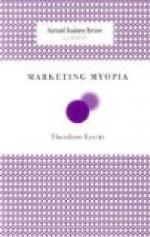Notwithstanding Liebig’s belief to the contrary, the idea that the decomposition of sugar during fermentation is intimately connected with a development of the cellules of the ferment, or a prolongation of the life of cellules already formed, is in no way opposed to the fact that the ferment is capable of bringing about the fermentation of a pure solution of sugar. It is manifest to any one who has studied such fermentation with the microscope, even in those cases where the sweetened water has been absolutely pure, that ferment-cells do multiply, the reason being that the cells carry with them all the food-supplies necessary for the life of the ferment. They may be observed budding, at least many of them, and there can be no doubt that those which do not bud still continue to live; life has other ways of manifesting itself besides development and cell-proliferation.
If we refer to the figures on page 81 of our Memoir of 1860, Experiments D, E, F, H, I, we shall see that the weight of yeast, in the case of the fermentation of a pure solution of sugar, undergoes a considerable increase, even without taking into account the fact that the sugared water gains from the yeast certain soluble parts, since in the experiments just mentioned, the weights of solid yeast, washed and dried at 100 degrees C. (212 degrees F.), are much greater than those of the raw yeast employed, dried at the same temperature.
In these experiments we employed the following weights of yeast, expressed in grammes (1 gramme=15.43 grains):
(1) 2.313
(2) 2.626
(3) 1.198
(4) 0.699
(5) 0.326
(6) 0.476
which became, after fermentation, we repeat, without taking into account the matters which the sugared water gained from the yeast:
grammes. grains. (1) 2.486 Increase 0.173 = 2.65
(2) 2.963 Increase 0.337 = 5.16
(3) 1.700 Increase 0.502 = 7.7
(4) 0.712 Increase 0.013 = 0.2
(5) 0.325 Increase 0.009 = 0.14
(6) 0.590 Increase 0.114 = 1.75
Have we not in this marked increase in weight a proof of life, or, to adopt an expression which may be preferred, a proof of a profound chemical work of nutrition and assimilation?
We may cite on this subject one of our earlier experiments, which is to be found in the Comptes rendus de l’Academie for the year 1857, and which clearly shows the great influence exerted on fermentation by the soluble portion that the sugared water takes up from the globules of ferment:
“We take two equal quantities of fresh yeast that have been washed very freely. One of these we cause to ferment in water containing nothing but sugar, and, after removing from the other all its soluble particles—by boiling it in an excess of water and then filtering it to separate the globules—we add to the filtered liquid as much sugar as was used in the first case along with a mere trace of fresh




